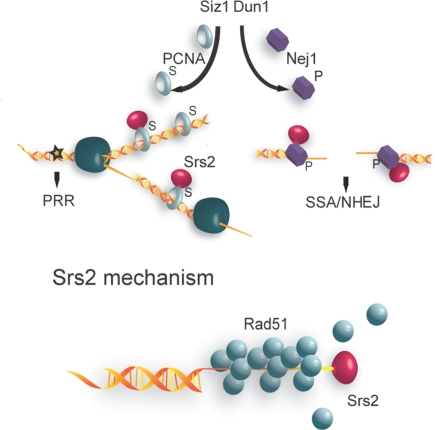Fig. 4.
Model of differential modes of Srs2 recruitment to replication forks and DNA DSBs. Srs2 is recruited to replication forks through an interaction with PCNA that is enhanced by Siz1-dependent sumoylation of PCNA. The star represents a DNA lesion. At DSBs, Srs2 recruitment is supported through an interaction with Nej1. Dun1-dependent phosphorylation of Nej1 might stabilize or modulate the interaction. Within both contexts, the biochemical ability of Srs2 to remove Rad51 from ssDNA is central to the outcome. At replication forks, preventing Rad51 nucleation on ssDNA antagonizes HR and shuttles DNA lesions into PRR. At DSBs, the same activity keeps shorter ssDNA tracts Rad51-free, and available for SSA/NHEJ.

